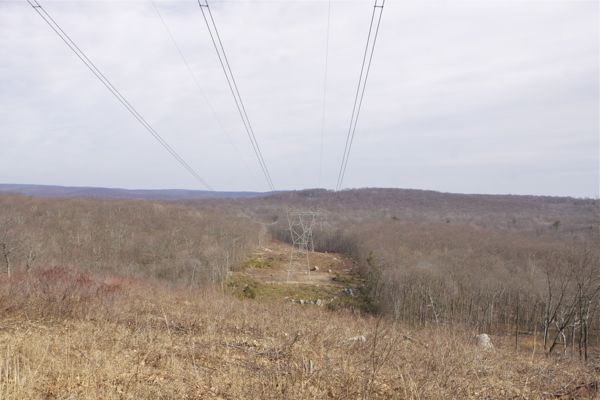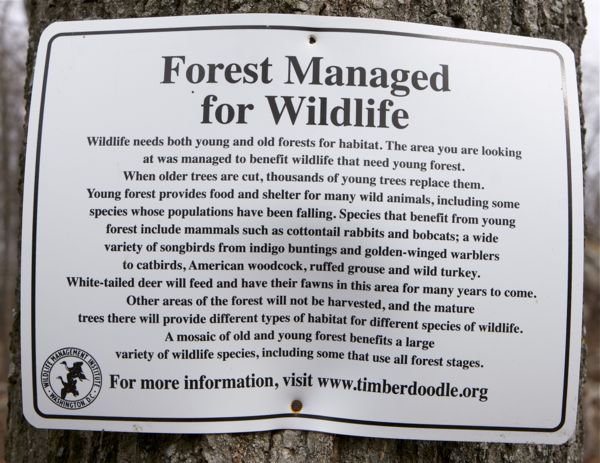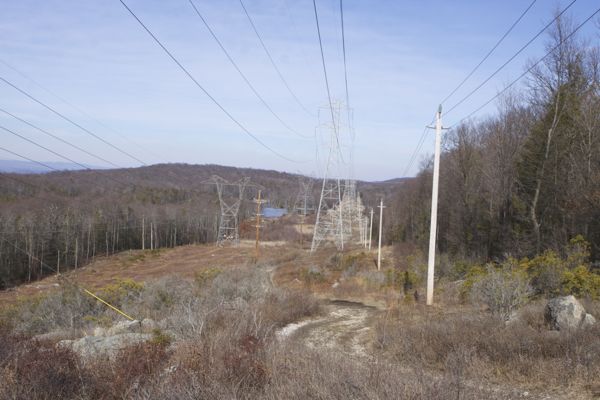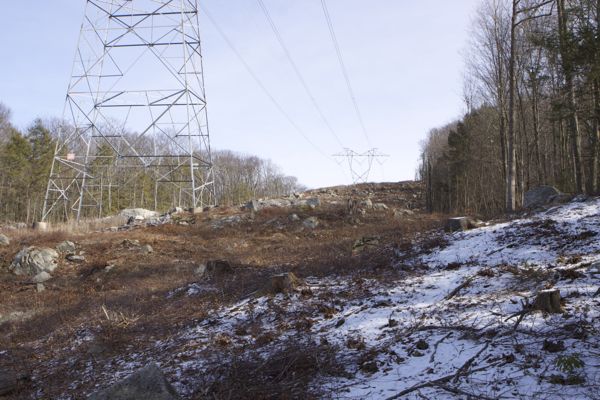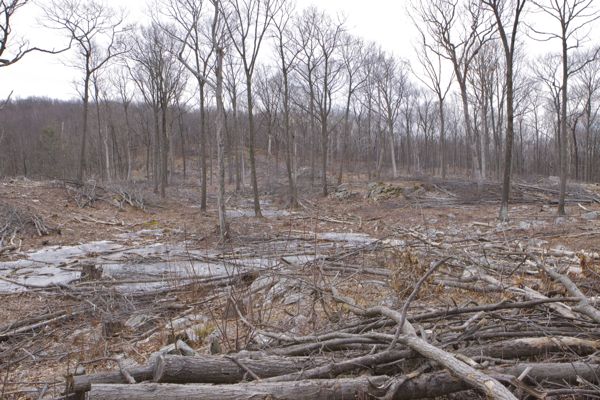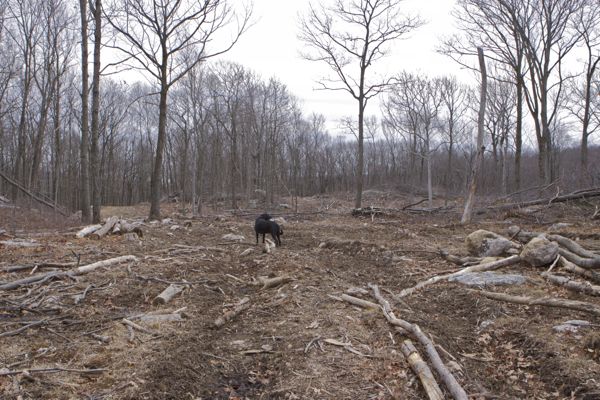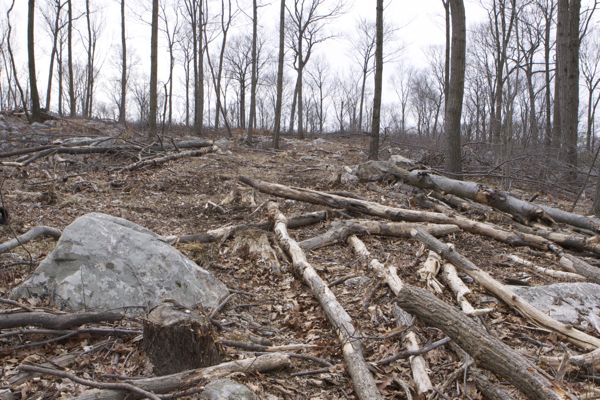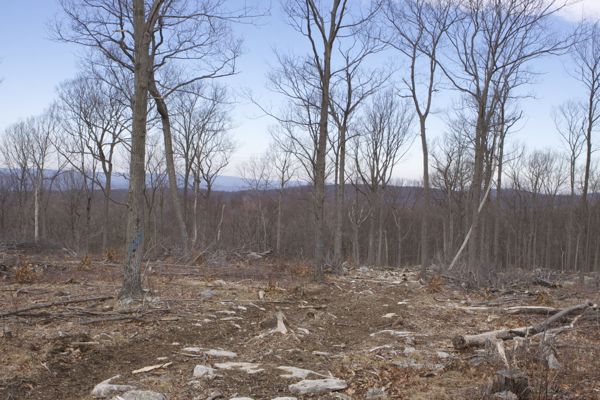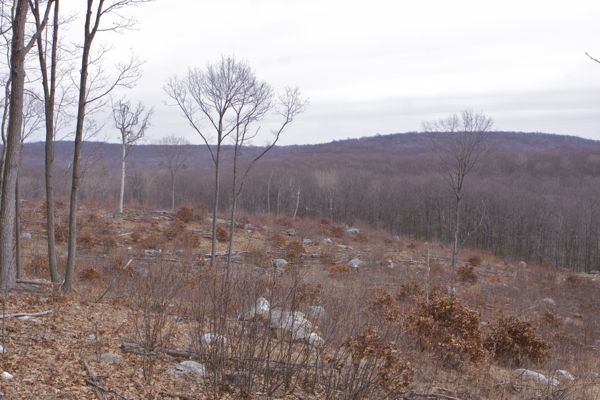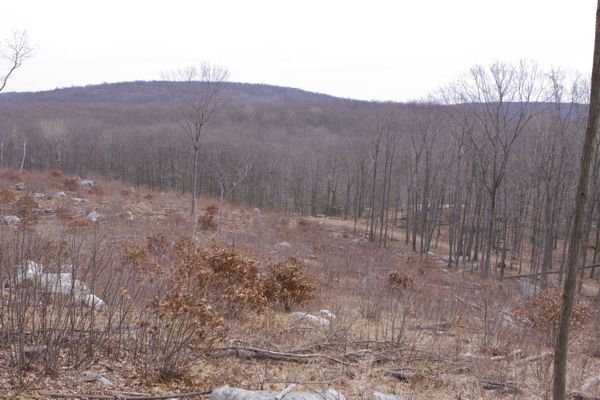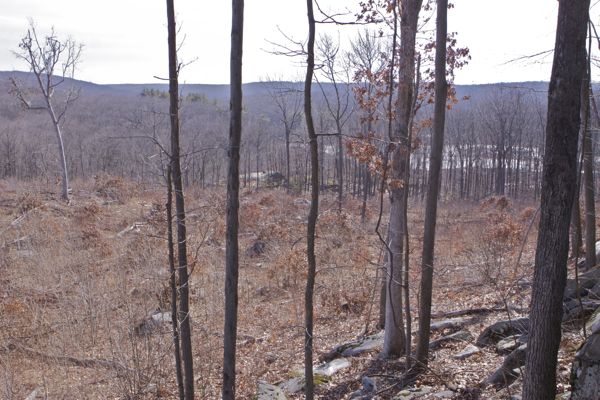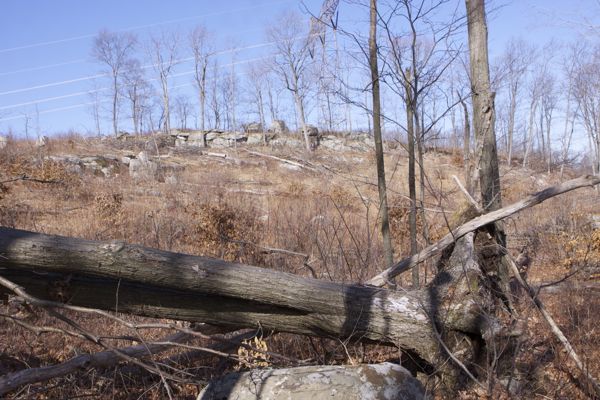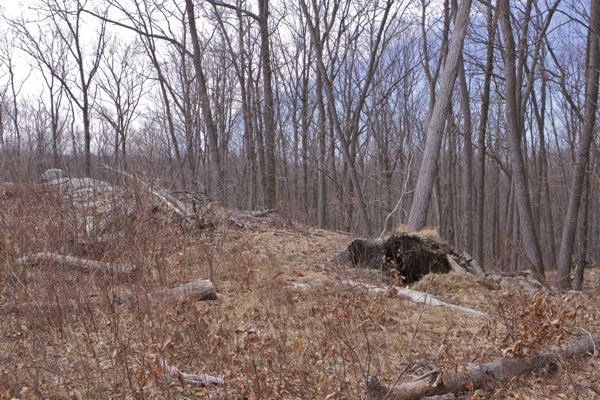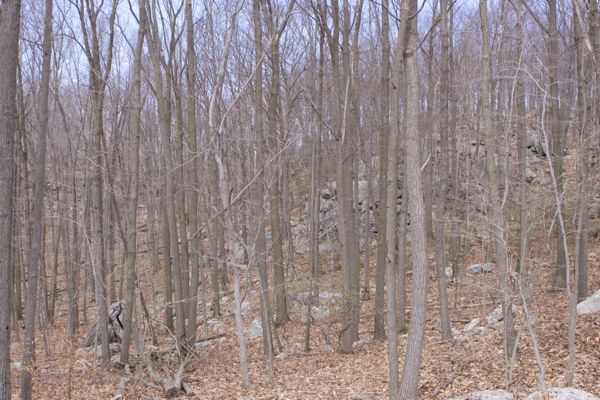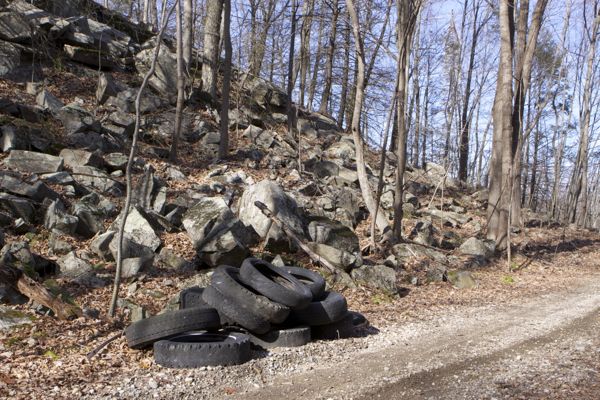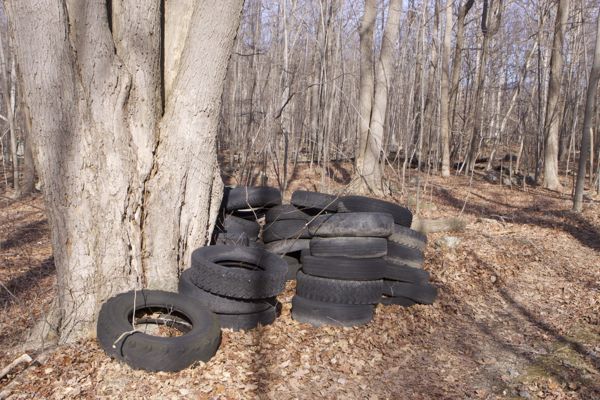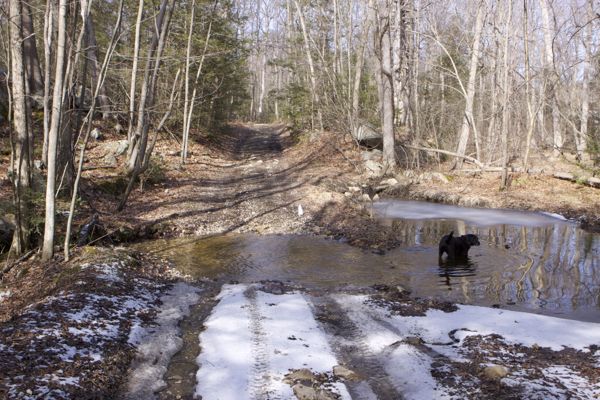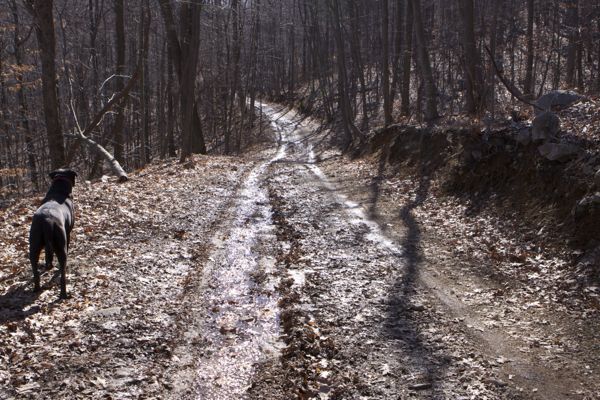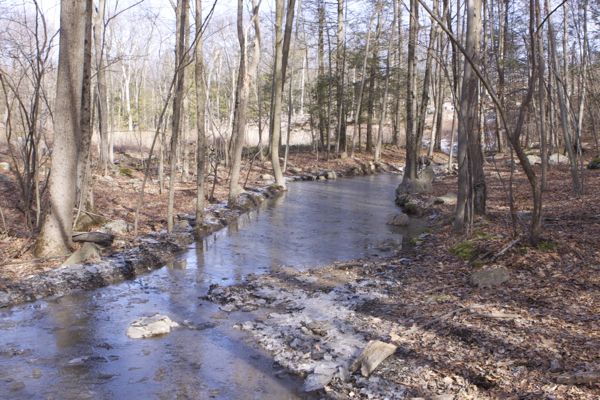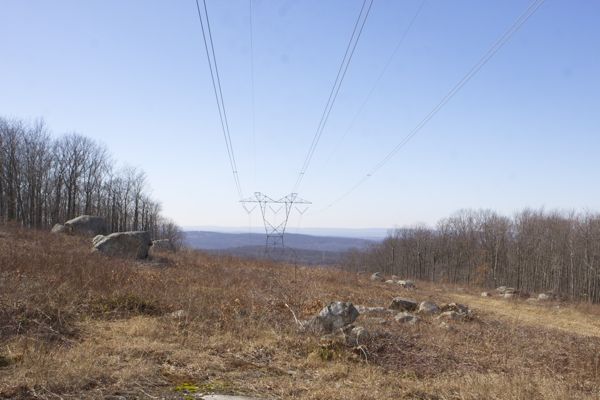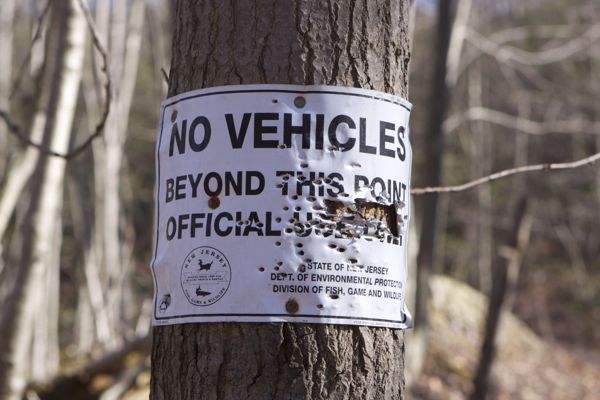Take A Look At DEP & Audubon “Forest Stewardship” On Sparta Mountain
Conceptions of the Forest Have Consequences
What They Don’t Want You To See
(this is part eight in our series on DEP’s proposed Sparta Mountain WMA logging plan – see parts 1-7 here.)
I was shocked to read that the DEP’s Sparta Mountain “Forest Stewardship Plan” is based on a management strategy to “mimic” (their term) the destruction of utility right-of way and create that destruction in the heart of the interior mature intact forest:
Instead of leaving their [rare plants] existence to the fate of the utility companies, we can manage areas outside of the ROWs near existing source populations to become reservoirs for these plants by mimicking conditions on the ROW. ~~~ DEP Forest Stewardship Plan, p.27
I had to see what this actually looked like on the ground (Google Earth view h/t SD).
After twice taking wrong turns on old logging roads, in my third try, yesterday I finally located the DEP’s prior (Owellian) “seed tree treatments” to create “early successional habitat” and “mimicking conditions” of ROW in the mature intact forest.
Along the way, I passed some interesting scenes, evidence of continuing “non-conformance” with the FSC’s stewardship standards that were “closed” 3 years ago.
Take a look at what I saw – but before you do so, read some of the twisted ideas of DEP foresters and what they recommend about the priority of the public’s normative aesthetic judgments about the management of public lands and how forests should look and feel:
Although wildlife management should be the primary emphasis for any Wildlife Management Area, it is paramount to balance habitat treatments at SMWMA with the recreational needs that users have grown to expect from this property.(p.29)
Sparta Mountain was purchased with Green Acres funds – by what right do DEP foresters think they can elevate wildlife and forestry concerns over preservation? To destroy habitat for some species to promote another? To degrade water quality and recreational experiences to promote one species of bird?
The DEP foresters think the public’s views are misguided and should be manipulated and “redefined”:
Silvicultural treatments may be temporarily unattractive to many. This can be mitigated to some degree through the use of leave- tree buffers around treatment areas known to receive more use, like well-known trails and vistas. Educating the public to the idea that an open park-like understory is less ecologically valuable than dense forest with downed trees and slash, may help to redefine the public’s view of forest aesthetics. This could be accomplished through strategic interpretive station placement.
(does anyone think “an open park-like understory” is what you appreciate and why you hike in the forest?)
Just a little sign oughta fix your problem: (of course this has nothing to do with privatizing the management of public lands; monetizing public natural resources; receiving foundation and government grants and consulting contracts; or generating timber revenue; or funding Audubon, FSC and DEP staff; stimulating the expansion and restoration of a commercial logging industry in NJ. No, none of that. It’s all about the wildlife and the declining golden wing warbler!)
DEP foresters see significant negative implications of public’s preference for preservation or public land – according to DEP, its the misguided “perceptions” of the public that are reducing habitat diversity and harming the economic interests of the forestry industry: (not just a NJ problem)
… social perceptions of forest management in New Jersey has significantly contributed to reduced habitat diversity throughout the region. (p.17)
The public’s attitude towards “preserving” public land became ingrained on passive ownership, and local industries associated with the harvesting and processing of forest products from these properties declined steadily. (p.17)
Here’s how these warped priorities and ideas about forests look on the ground – first, let’s look at the ROW conditions DEP is trying to “mimic” in the interior forest:
Now, let’s look at 2 locations on the top of Sparta Mountain and see if they were successful: this was the first of 2 “seed tree treatments” I found – the photos don’t do the scene justice because they don’t convey the scale of the destruction, communicate how it feels to be in this landscape, or bring out specific details, like the compacted soils, erosion, and wetland pond in the foreground of the first photo:
I continued walking up the logging road, where I could see a vast forest opening on the horizon and felt that there were more “seed tree treatments” to discover – and I was right. This “treatment” was larger – and note the drainage down to the pond & wetlands, the roads, and blowdowns along the edge:
Here is what the current conditions look like- those “even age class” non-diverse forests that must be given the “treatment”: which do you prefer?
Audit OK
Here’s what FSC 2013 Audit found (p.5) :(there were two additional audits in 2014, and 2015 that I have not read yet. The fact that this issue is over 3 years old only makes it worse.)
Evidence of illegal ATV use and dumping was observed at Sparta Mountain Wildlife Management Area (SMWMA) and NJA Hovnanian Sanctuary. At both FMUs use restrictions were not clearly marked at vehicular access points, and no other actions had been taken to curtail the illegal activities. Stakeholders report there is no enforcement at Sparta WMA.
Her is the corrective action Audubon was required to take by 2014:
Organization shall implement corrective actions to demonstrate conformance with the requirement(s) referenced above. Note: Effective corrective actions focus on addressing the specific occurrence described in evidence above, as well as the root cause to eliminate and prevent recurrence of the non-conformance.
Here is the evidence FSC considered to close out (resolve)the issue:
NJA provided correspondence between NJA and New Jersey Department of Environmental Protection (NJDEP) regarding signage and access control, text for new signs prohibiting motorized vehicles, and photographs of one of the signs on the Sparta Mountain Wildlife Management Area (SMWMA) FMU.
The auditor was not able to visit either of the FMUs referenced in this NC; however, evidence of signage and ongoing measures to control unauthorized access was observed during the audit at the Newark Watershed and the NJA Van Gelder Sanctuary.
(note that illegal dumping was not even mentioned).
Here is what I saw both yesterday and on a prior Feb. 10, 2016 hike (these are just 2 of the 7 piles I saw along about 1/2 mile of old logging road now used by PSEG to access the ROW):
Finally, I found violations of FSC water quality standards that was not even identified in the FSC audit. Two streams had been crossed by logging roads – the drainage culverts under the road had collapsed, forcing the stream to flow right through the road and creating a small pond (these are “exceptional value” C1 waters under NJ DEP regulations):
One logging road, that drained the first “treatment” depicted above, had become a flowing stream, eroding soils and delivering sediment to streams and wetlands and a pond:
Roads had been damaged and eroded by ORV’s:
That’s the kind of “Stewardship” DEP foresters and their well funded friends at NJ Audubon are providing. Look again, this is the landscape that are trying to “mimic”:
